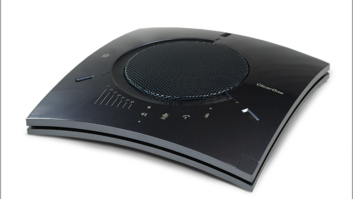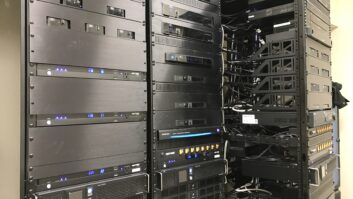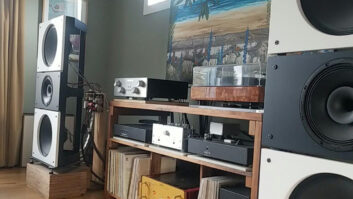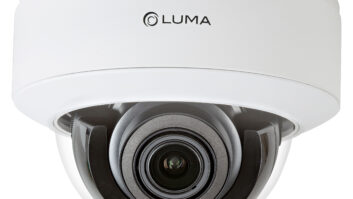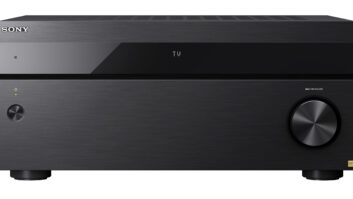In recent years, there has been an explosion in the number of A/V receiver and controller products that include automatic speaker setup and equalization systems. Weve seen manufacturers like Lexicon, Meridian, Pioneer, and Yamaha develop systems specifically for their products, while other manufacturers like Denon and Onkyo have opted for third-party offerings such as Audyssey MultEQ.
On the whole, I think this trend has been good for the industry. For one thing, it has raised consumers awareness that an audio system must be set up and tuned. It has also provided them with a way to get pretty decent sonic results without an advanced degree and lots of expensive test gear.
Automatic systems can even be useful to an experienced calibrator, because they significantly shorten the amount of time he/she has to spend measuring things like speaker distances and channel levels. Unlike the consumer, though, the experienced calibrator knows to independently verify the results of the automatic system through listening tests and additional measurements. Automatic systems arent foolproof. Without human oversight, they can be tricked into making some pretty goofy settings.
Acoustics Still Matter
A number of factors can throw off an automatic system, but the one that seems to crop up most often is room acoustics. Some people have the idea that automatic systems, particularly ones that include equalization, fix acoustic problems, so the room doesnt need any absorptive or diffusive treatment. Nothing could be further from the truth. Sound reflections from untreated room boundaries interfere with the measurements, causing the brain of the automatic system to make incorrect decisions. The more controlled the reflections are, the more accurate the measurements will be. The more accurate the measurements, the better an automated system will perform.
This point was recently demonstrated when the broadcast audio producer of the Grammy Awards asked me to help with the acoustics of the pre-mix room (which was actually a converted temporary building). They were trying to use an automatic equalization system built into Genelec monitors, but it was producing inconsistent results in the pre-mix rooms untreated environment. On the other hand, the Genelec system was doing fine in the acoustically treated broadcast truck. The reflected sound energy in the pre-mix room was simply too strong for even a system as good as Genelecs to take accurate measurements. After we treated the room, the automatic system worked there, too.
Measurement Systems Dont Hear
Sound reflections interfere with systems like the Genelec because they are not able to measure sound in the same way that humans hear it. Its an issue common to all measurement systems (even manual) that use steady-state processes like RTA with pink noise or some type of time-based measurements with long or no time windows. Essentially, they analyze all the reflected sound in the room as well as the direct sound from the speakers. Nothing filters out the reflections. Conversely, the human brain has a very advanced system for filtering out unwanted reflections.
Consider, for example, the difference between what you hear in a reverberant lecture hall when someone is speaking versus what you hear when someone records the lecture on a handheld device. When youre live, you can tell that reflections are bouncing around the room, but you can also hear the distinct sound of the presenters voice. The recording, however, sounds like it was made in a well. Your brain is able to sort through all the reflected sound to find whats important, but the little microphone in the recorder cant. The same principle applies to the measurement processes used by most automatic systems.
The Sonic Bubble
Even when an automatic system does manage to get each speaker configured and equalized correctly, there is still a component that eludes it. It cannot evaluate how well the speakers create phantom images. (Phantom imaging occurs when you sit equidistant from a pair of speakerswhether in front of, beside, or behind youand the sound appears to originate from a point between the speakers rather than from one speaker or the other.)
Imaging is truly difficult to achieve, because it requires the spectral balance and arrival times of all frequencies from all speakers to be very nearly identical. An automatic system may get each individual speaker to sound good, but it cant tweak all of them to improve how they work together to form images.
This is a disappointing shortcoming, because imaging is really what the multi-channel audio experience is all about. Its logistically impossible to put speakers at every location where a sound designer might want to pan sound. Therefore, a limited number of speakers must be able to simulate all those locations. Once you get more than about six feet from the speakers, your ears have to fight a tough battle against room reflections to hear imaging, and the poor automatic systems are not even sophisticated enough to analyze it under the best of circumstances. At least for the time being, humans will have to make the final call on things like EQ, delays, and channel levels as they pertain to imaging.
A Positive Outlook
Yes, automatic systems do run into some issues where room acoustics and imaging are concerned, but dont be discouraged. You can do wonders to improve their performance by simply treating your rooms. The proper blend of absorption and diffusion will reduce the amount of reflected sound energy in the room, leading to more accurate measurements and, in turn, better results. Youll also see a marked improvement in imaging, because the response from all the speakers will be more uniform without all those reflections.
Furthermore, its still early in the game for automatic systems. Someone will address the aforementioned issuesprobably in the not-too-distant future. In fact, I am currently working to implement some very promising new ideas into several systems that will be entering the market soon. I cant reveal all the secrets, but I will tell you that measuring the right balance of near-field response and in-room energy plays a significant role.
The important thing is to realize that automatic systems still need intelligent assistance from you to achieve optimal results. Use them as a tool in your calibration arsenal, but dont blindly trust that they know more about good sound than you do just because they were designed by PhDs. Help them out by treating the acoustics of your rooms, and always remember to check for imaging by listening to narrowband and broadband pink noise pans around the room before you pronounce a system complete.
Chase Walton contributed to this article.
Anthony Grimani ([email protected]) is president of Performance Media Industries, a California-based acoustical engineering firm specializing in home theater design and calibration.



